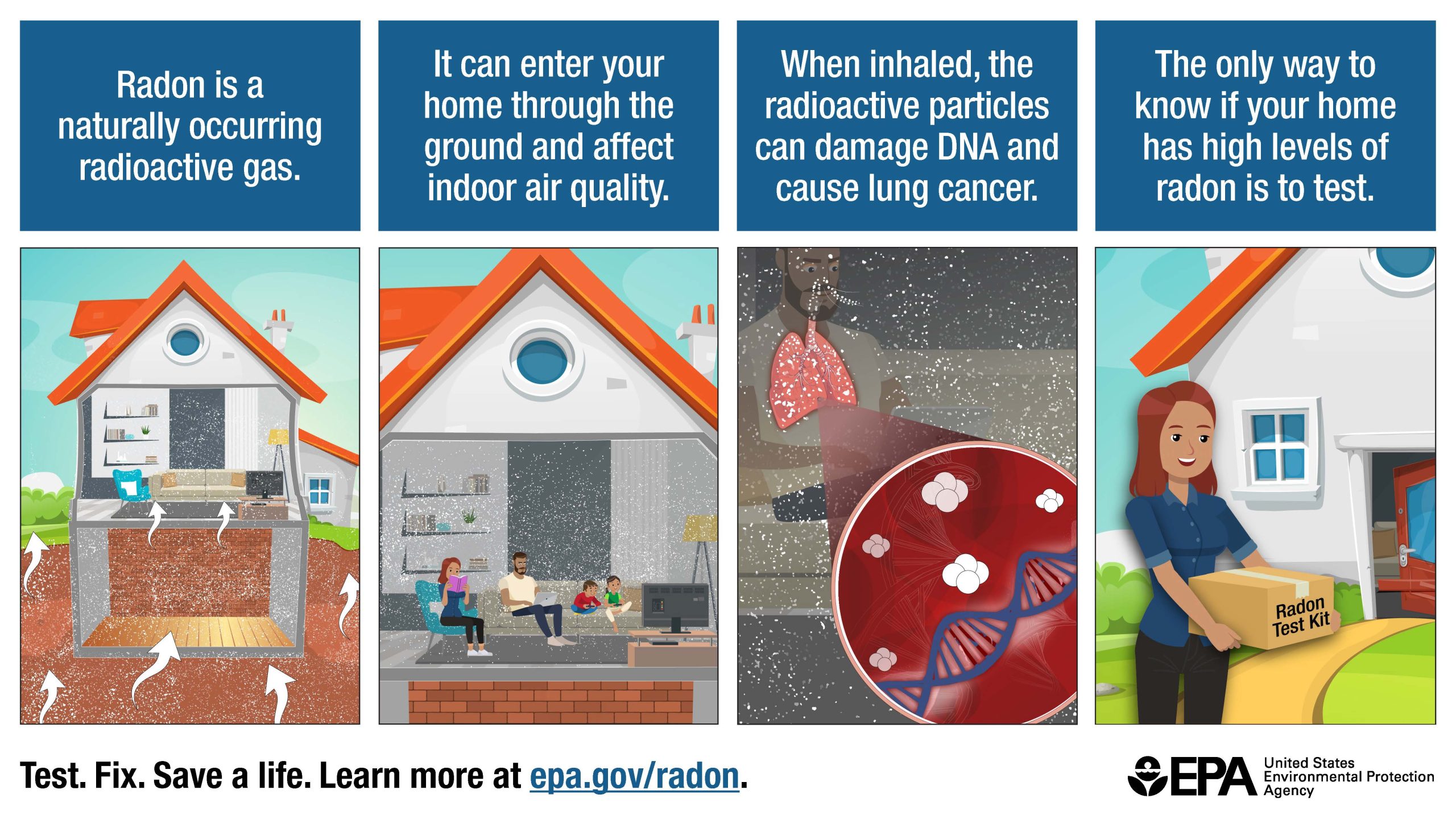Welcome to our comprehensive guide on radon, a silent intruder that might be affecting the air you breathe. In this post, we’ll unravel the mysteries surrounding radon, its potential health risks, and the crucial steps to protect your home and loved ones.
What is Radon?
Radon is a colorless, odorless, and tasteless gas that originates from the natural breakdown of uranium in soil, rock, and water. It can enter homes through dirt floors, foundation cracks, pipe penetrations, etc.
Health Risks:
Radon is the second leading cause of lung cancer after smoking. Prolonged exposure to elevated radon levels can pose a serious health risk, as the radioactive particles it releases can damage lung tissue and lead to cancer over time. The risk increases for smokers exposed to radon.
Testing for Radon:
The only way to know if your home has elevated radon levels is through testing. Radon testing is simple and inexpensive, with various testing options available:
Short-Term Tests: These tests typically last from two to 90 days, providing a snapshot of radon levels. They are useful for quickly assessing the situation.
Long-Term Tests: These tests extend over 90 days, offering a more accurate picture of average radon levels throughout the year. They provide a better understanding of the long-term risk.
DIY vs. Professional Testing:
While there are DIY radon testing kits available, professional testing is recommended for a more accurate assessment. Certified radon professionals have the expertise to ensure proper testing conditions and accurate results.
Radon Mitigation:
If elevated radon levels are detected, mitigation measures can be implemented. Common radon mitigation methods include:
Sub-Slab Depressurization: This involves installing a vent pipe and fan to draw radon from beneath the foundation and vent it outside.
Ventilation: Improving natural ventilation in crawlspaces or basements can help reduce radon levels.
Sealing Cracks: Properly sealing foundation cracks and openings can prevent radon from entering.
Understanding radon and taking proactive steps to test and mitigate its levels is crucial for ensuring a safe and healthy living environment. Don’t wait—prioritize radon testing and make your home a safer place for you and your family. Your health is worth the investment.

